
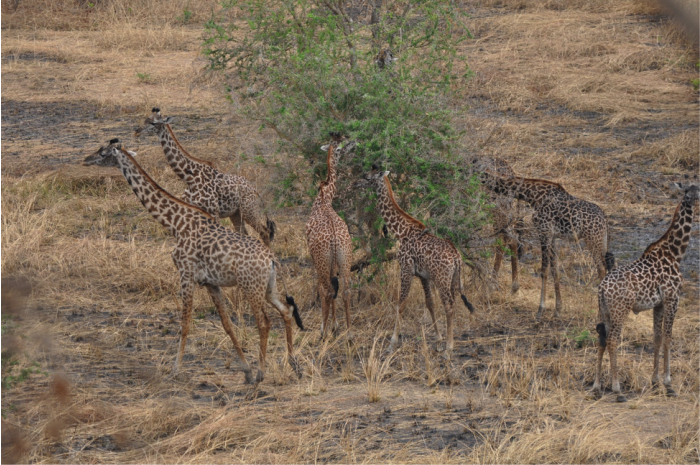
Every three years, the Convention on International Trade in Endangered Species of Wild Fauna and Flora Conference of the Parties (CITES CoP) meets to deliberate the best tactics to adopt for saving species by reducing or limiting the transboundary movement of live animals or their body parts. In August 2019, the 18th meeting (CoP18) convened in Geneva, Switzerland. I attended the meeting.

So did a couple of thousand other people, representing not only 183 countries (called “Parties”), but also inter-governmental organizations (IGOs) and non-governmental organizations (NGOs). I attended my first academic meeting in 1975, but this gathering was unlike any conference, symposium or meeting that I had ever attended. Not only because of the number of people present, but also because of the very strict protocols involved in running the event, the simultaneous translation into English, French and Spanish, the continued searching and lobbying to discover opponents and proponents of proposals, the distribution of toy stuffed animals as tokens of appreciation to partners and friends, and the need to be ready at virtually any time to explain in an “elevator speech” of a couple of minutes why voting “Yes” on Proposal 5 was crucial for helping to stop the decline in giraffe numbers.
Proposal 5 was submitted by six African countries (Central African Republic, Chad, Kenya, Mali, Niger and Senegal) as a way to ameliorate the illegal trade in giraffe specimens by adding giraffes to Appendix II of CITES. I was invited as a “giraffe expert” to provide a solid scientific basis for adopting the proposal as one of many items in the conservation toolkit for saving giraffes. Giraffes are illegally killed not only for bushmeat, but for their hides, heads, bones and tails. You can buy a stuffed giraffe neck and head in the United States for about $6,000, but whether or not that giraffe was killed legally is a murky issue.
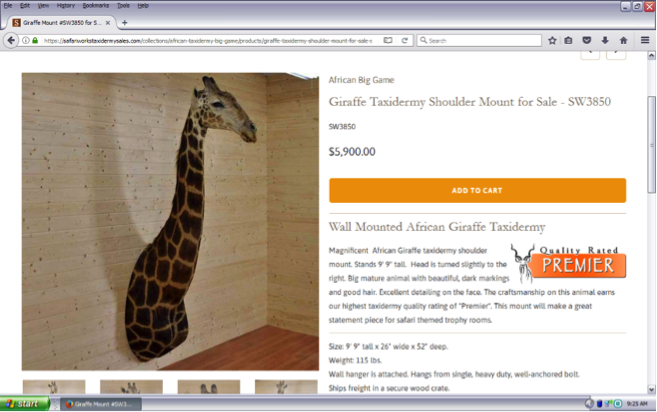
Giraffes (Giraffa camelopardalis) are categorized on the IUCN Red List as “Vulnerable” to extinction. One major threat to their survival is illegal hunting, especially of some subspecies that are “Endangered” or “Critically Endangered.” Some of that illegal hunting involves commercial gains for poachers that are facilitated by the movement of giraffe specimens across borders. To take one example, according to official US Government records, in 2012, 50 giraffe specimens were imported into the US from South Africa, but the country of origin of the body parts was Somalia. Only reticulated giraffes (G. c. reticulata) live in Somalia; hunting giraffes is illegal in Somalia; reticulated giraffes are classified on the IUCN Red List as an “Endangered” subspecies; their numbers have plummeted by at least 56%, and possibly as much as 78%, over the last thirty years; and only about 11,000 reproductively mature individuals exist in the wild. We have no way of knowing if the 50 giraffe specimens came from one or 50 animals, but the database conclusively demonstrates that giraffes are victims of an “international trade in endangered species”.
Appendix II of CITES includes species that are either threatened with extinction or at risk of extinction unless action is taken to regulate the illegal trade that is detrimental to their survival. Appendix I is more stringent and contains species threatened with extinction where strict regulation is necessary to ensure the survival of the species by allowing trade in either live animals or body specimens across boundaries “in exceptional circumstances” only. Appendix III is less rigorous and lists species where tighter regulation of trade is necessary in order to prevent adverse exploitation of and consequences to species. Listing giraffes on Appendix II won’t make them permanent residents of that Appendix. Should the systematic monitoring of international trade in giraffe across national boundaries reveal a pattern more detrimental than currently documented, they can be shifted to Appendix I. Conversely, if monitoring of the transboundary trade in giraffe specimens documents a less consequential impact on the survival of the species than currently suspected, then giraffes can be removed from Appendix II.
As mentioned, CoP18 has a very structured and formal way of conducting business. Nobody asks questions to the entities that present their reasoning for supporting or opposing a proposal. The Chair has enormous power — he determines which entity to call to explain their position, how long each individual can talk (usually three to five minutes) and how long the discussion continues until a vote is taken. The first few rows of the room are occupied by the Parties, behind them sit the IGOs, next come the NGOs and, finally, in the last couple of rows, other attendees who could not sit with their delegation because of limited seating. The sequence of presentation is the same as the order of seating. The first speakers for a proposal are the Parties that submitted the proposal. Next up are the opponents of the proposal. The Chair usually then asks IGOs, and sometimes NGOs, on both sides to present their positions. Oftentimes, the key proponents and opponents are known in advance. The procedure is not democratic by any means; the Chair seemed to favor specific countries, such as the US, or entities, such as the EU, that carry a lot of weight, but he also tried to have an equal number of proponents and opponents talk. Some proposals, such as those dealing with the live trade in African elephants, received more time than other proposals, such as those dealing in the live trade of otters. The speeches are called “interventions” and I was prepared to give an intervention in support of Proposal 5.
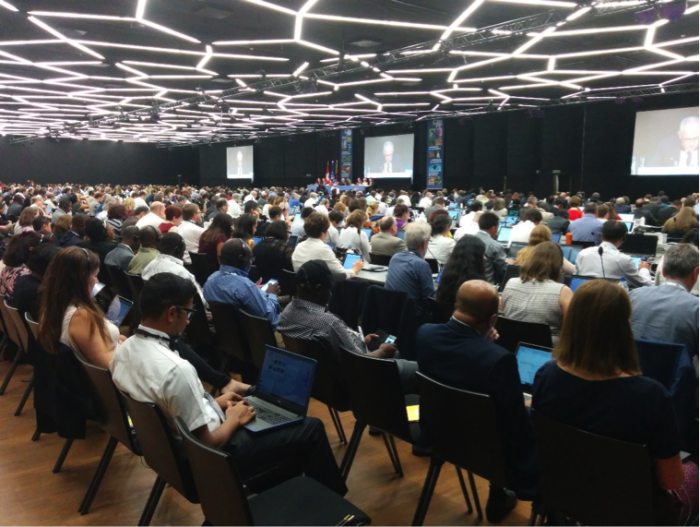
But that was not a straightforward task. Although the Board of Directors of Save The Giraffes had unanimously voted in favor of listing giraffes on Appendix II of CITES, and had let the proponents of the proposal know of our position, I was not there as a delegate from Save The Giraffes, which is not an officially recognized NGO by CITES. Instead, I was a delegate from the Center for Biological Diversity, coordinating my efforts with Humane Society International, both organizations having closely worked with the International Fund for Animal Welfare and the Natural Resources Defense Council in support of giraffe conservation efforts, not to mention additional collaboration with the Species Survival Network. Given the extensive leeway that the Chair has, how were we to ensure that my intervention would be heard by all of the delegates?
The key was this: I was invited to give my intervention by the Central African Republic. In advance of the debate and discussion, CAR had approached the Chair to request that he recognize and permit me, as a giraffe expert, to give an intervention in lieu of one by CAR. Such a procedure is uncommon, but permitted. Chad introduced Proposal 5 to the assembled participants, and CAR followed by officially asking the Chair for his permission for me to speak. Permission was granted and I had to condense into three minutes the major reasons why giraffes should be listed on Appendix II.

Luckily for me, some opponents had unknowingly tipped their hand earlier at the conference, so I tailored my intervention to counter their positions in front of the Parties when Proposal 5 was introduced. A couple of days before Prop. 5 was introduced, a “side event” was scheduled to provide delegates with more information. Attendance was beyond expectations, with about 150 people cramming into the standing-room only crowd. Two of the proponent Parties gave a brief overview of Prop. 5 and the reasons for submitting it to CoP18, and then I gave my 10-minute PowerPoint presentation on giraffe biology, how the IUCN operates, the major threats to giraffes and why voting “yes” on the proposal was in the best interests of giraffe. Giraffe life history makes it difficult for them to rebound when their numbers decline because, under natural situations, their reproductive biology and the level of predation by lions on calves put them at nearly Zero Population Growth. The IUCN Red List notes that a major threat to giraffes is illegal hunting for bushmeat, hides, bones and tails, and that some giraffe specimens travel across international boundaries for commercial purposes. During the Q&A that followed my presentation, there were two questions of particular note that I knew I should also respond to during my intervention.
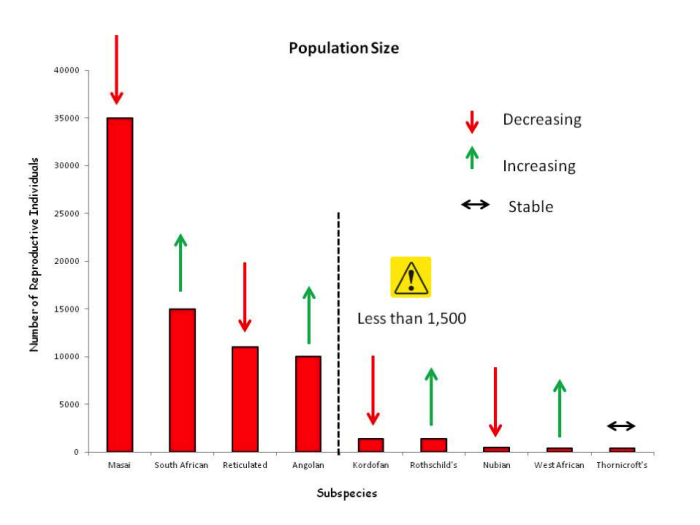
One individual wanted to know how many giraffes contributed to the 50 specimens recorded from Somalia, so I explained why that was not the main issue. The essential point was revealing that a market was present for the international trade in body parts of endangered species that were illegally killed. The second question was what percent of specimens in shipments from South Africa to the US contained specimens from countries of unknown origin, indicating illegal killing. My reply was that the question was the wrong one to ask from a conservation science perspective because the crucial question is not the percentage of a shipment with illegal specimens, but the percentage of a source population that is taken by illegal killing. Five specimens in a shipment of 1,000 specimens is 0.5%, but five specimens from a population of 500 is 1%, which might not sound like a lot, but some giraffe populations are that low in number and 1% of the population of the US is about 3,400,000 people, or the number of people in the state of Oregon.
After my presentation, I received word that the IUCN was upset by what I had said because the IUCN/TRAFFIC report had recommended against listing giraffes on Appendix II and people might think that I was speaking for the IUCN, thereby causing problems. However, I have no control over what people think and my talk began with me explicitly stating that I was speaking as a giraffe expert, not as a representative of any organization. The IUCN/TRAFFIC opposition was also befuddling because one would think that if a species has declined by 40% in three generations, then any and all measures designed to save that species would be useful. Even more bizarre was that members of the IUCN Giraffe and Okapi Specialist Group (GOSG), who had written the Red List Assessment, were not consulted before the report was issued. One member of the GOSG tried to find out who had actually authored the report, but the request was met with tin ears. Furthermore, the IUCN/TRAFFIC report contained a striking illogical paradox.
According to the final paragraphs of the IUCN/TRAFFIC report “An Appendix II listing would produce data that would provide a clearer picture [my emphasis] of a) the full extent of international trade and b) the provenance of some Giraffe products in trade…[but]…there is currently no scientific basis to suggest that the current levels of international trade pose a threat to giraffe populations.” The logical inconsistency of the IUCN/TRAFFIC report is the position that “no scientific basis” exists for a listing, but that a listing would provide a scientific basis to understand in more depth the extent to which the illegal killing of giraffes, and the transboundary shipment of specimens, is detrimental to populations of giraffes. So why not list giraffes? Similar reasoning is adopted by politicians who claim that an insufficient scientific database points to human beings as responsible for global warming, but then try to cut the budget to fund research on the causes of global warming. In addition, Resolution Conf 9.24 (CoP17) explicitly notes that an Appendix II listing is in order if “..it can be inferred or projected that regulation of trade in the species is required to ensure that the harvest of specimens from the wild [is not detrimental to survival of the species] (Annex 2a), and that “…by virtue of the precautionary approach and in cases of uncertainty…[of the]…impact of trade on the conservation of a species…[the Parties]…should act in the best interest of the conservation of the species…” (Annex 4). Hence, the best, and only, available data does show an international trade in giraffe specimens that can only have been obtained by the illegal killing of subspecies threatened with extinction, and the “precautionary principle” translates to when in doubt, carry it out. I still don’t understand why a proposal that is designed to collect key data essential for tracking the international trade in giraffe specimens was viewed unfavorably by the IUCN, when they admit that such data would be useful, nor do I comprehend why the IUCN issued their findings without consulting the members of the GOSG. I do, however, understand why they would not want people to hear my opinion as a giraffe expert.
The day came when Proposal 5 was on the agenda. The Chad delegate introduced the proposal, and the CAR delegate followed with their request to the Chair that I be given the opportunity to present my intervention. About two-thirds of the way through, the Chair cut me off, saying that time was limited and I should quickly finish. I skipped to my conclusion: “To summarize: the IUCN Giraffe and Okapi Specialist Group notes that the illegal killing of giraffes in Africa is a major threat to their persistence on the planet; evidence reveals that giraffes are killed for bushmeat, as well as for body parts, such as their hide, bones and tails; the IUCN Red List specifically notes that transboundary trade in giraffe parts has been documented as a market for illegal kills; the giraffe parts sold in the US and in Europe cannot unequivocally be attributed to legal hunting; some giraffe parts sold in the US were connected to countries where the hunting of giraffes is illegal and the subspecies within those countries are threatened with extinction; the best available data to date reveals that the illegal hunting and transboundary trade in giraffes and giraffe parts creates a reasonable basis for inferring that such activities are a threat to the survival of the species; and the listing of giraffes on Appendix II has absolutely no negative ramifications for the conservation of this magnificent, iconic and wonderful creature.”
The Chair called on both opponents, including IUCN, and proponents for their interventions before announcing a vote was to take place. To pass a proposal requires a two-thirds majority, but before the proposal could be voted on, the Parties had to vote on a possible amendment. Botswana had suggested an amendment that would basically split giraffe populations into separate entities, so that an Appendix II listing would not apply to giraffes in every country. That amendment was defeated, so the original proposal came up for a vote. Only Parties vote, not IGOs or NGOs. Voting is achieved by pressing a button at the table where the Parties are seated. Immediately before the vote, the Chair asks the technicians if they are ready and requests that all delegates be seated. Forty seconds is allotted to voting and then the results appear on the three big screens in front of the room.
WOW! What a mindboggling result! It was not even close. Those of us who worked in favor of the proposal were elated. The vote was 106 in favor and only 21 against, amounting to 83% of voting Parties agreeing that giraffes should be listed on Appendix II because the international commercial trade in illegal specimens is likely to be harmful to the survival of the species. Nearly half of the opposition Parties were countries that feared the inclusion of giraffes on Appendix II would be harmful to the legal hunting of giraffes in their country, although Switzerland, Japan and Norway were also among the Parties that voted against the proposal.
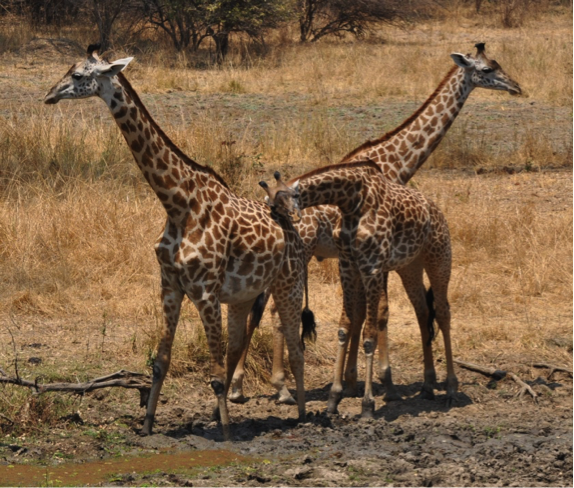
We had repeatedly heard in the opposition interventions that Proposal 5 was not based on solid science, but on emotion. Actually, it was based on both; I do not know any scientist who lacks passion (an emotion) for what they study. However, many hunters enjoy (an emotion) hunting, and a preponderance of opponents were either hunting organizations or Parties that permit the legal hunting of giraffes. Neurobiology teaches us that the cognitive components of the neocortex are inextricably interconnected with the emotional components of our brains. We are both thoughtful and emotional creatures, just like other animals. I would not have spent over 40 years of my life conducting research on wild animals in their natural habitat and in zoos if I did not enjoy the wonders of nature. My brain gears are constantly churning with questions about the evolution and natural history of animals, questions that can only be answered by solid scientific investigation driven by my love of animals and the outdoors.
As conservation scientists, we must collect the most accurate data possible in order to save species. I am proud to have been a member of a wonderful team of dedicated activists who are completely capable of meshing science with emotion. I find it rewarding to work with wildlife warriors who strive to guard Mother Nature. Thanks to everyone — Teresa, Tanya, Adam, Iris, Becky, Mark, Sumanth, Mai, Audrie, Manon, Nichol, Bri, Greta, Elodie, Daniela, Matt, Paul, Kathi, Sandra, Lois, Elly and others — not only for their superhuman and indefatigable efforts to stand up for giraffes, but also for their combined camaraderie in creating a better environment for the survival of otters, mako sharks, elephants, tortoises and turtles, glass frogs, teatfish and other creatures that share this planet with us. The only real setback was the defeat of the proposal to list glass frogs. Parties voted 64% in favor of listing them on Appendix II, but that fell shy of the 67% required. Let’s hope that some of the species do not disappear before CoP19 in Costa Rica, home to multiple subspecies of glass frogs.
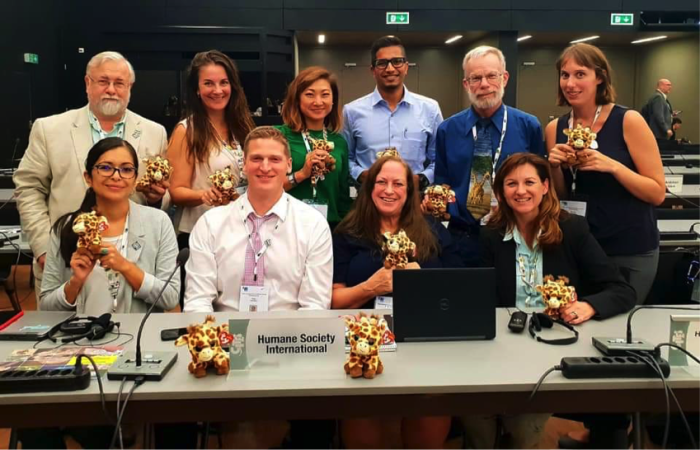
Evolution occurs over eons, while extinction occurs in decades. As Charles Darwin wrote in The Origin of Species, “rarity precedes extinction; and we know that this has been the progress of events with those animals which have been exterminated, either locally or wholly, through man’s agency”. Sadly, the pace of extinction has accelerated since Darwin’s time. Saving species is something that everyone can do, even without attending a CITES meeting.